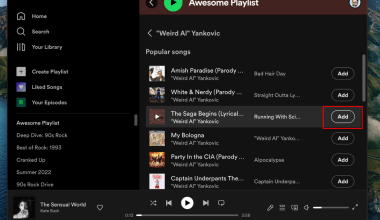Writing a song can feel overwhelming, especially if you’re just starting out. But the truth is, anyone can learn how to write a song with a bit of practice and the right guidance. Songs are all around us—they’re the soundtracks to our lives. They express emotions, tell stories, and bring people together.
This guide will walk you through everything you need to know about writing a song. Whether you’re a beginner or someone who wants to improve, this step-by-step approach will help you create songs you’re proud of.
What Is a Song?
A song is more than just words and music. It’s a way to share emotions, tell a story, or send a message. A good song connects with listeners, making them feel something—joy, sadness, excitement, or nostalgia.
When writing a song, think of it as a conversation between you and your audience. You’re expressing what’s in your heart and mind, and the listeners get to experience it through your words and melodies.
Why Write Songs?
People write songs for different reasons:
- To express emotions: Happiness, heartbreak, or hope.
- To tell a story: About love, life, or challenges.
- To inspire others: Motivating people through music.
- To have fun: Writing songs can be a joyful and creative experience.
Whether you want to become a professional songwriter or just enjoy music, writing songs is a skill worth exploring.
Getting Started with Song writing
If you’ve never written a song before, don’t worry. Songwriting is a skill that improves with practice. Here’s how to start:
- Find your inspiration: Think about a feeling, event, or idea you want to share.
- Pick a theme: Love, friendship, challenges, or dreams are common themes.
- Keep it simple: Start with a basic idea and build from there.
For example, if you’re inspired by a walk in the park, you could write a song about feeling peaceful in nature.
Breaking Down a Song: The Key Parts
Most songs have a basic structure. Understanding this can make songwriting easier. Here are the main parts of a song:
- Verse: This tells the story or sets the scene.
- Chorus: The main message or emotion of the song. It’s often repeated and catchy.
- Bridge: A section that adds something new, like a twist in the story.
- Outro: The ending of the song.
For example, in the song Let It Be by The Beatles, the verses set the scene, and the chorus delivers the powerful message.
Writing Lyrics: Finding the Right Words
Lyrics are the words of your song. They should match the theme and emotion you want to share. Here’s how to write good lyrics:
- Start with a title: This can help you focus. For example, “Dreaming of You.”
- Use simple language: Write like you’re talking to a friend.
- Focus on emotions: What do you want the listener to feel?
- Rhyme (optional): Rhymes can make lyrics sound more musical.
Creating a Melody: The Tune of Your Song
The melody is what people hum or sing along to. It’s the heart of your song. Here are tips for creating melodies:
- Keep it simple: Start with a few notes and build from there.
- Use repetition: Repeated notes or phrases make melodies catchy.
- Experiment: Hum or play different tunes until something feels right.
A simple melody like the one in Twinkle, Twinkle, Little Star can be just as memorable as a complex one.
Adding Chords and Harmony
Chords are groups of notes played together. They support the melody and give your song depth. If you play an instrument like guitar or piano, experiment with different chords to find what fits.
Common chord progressions:
- C – G – Am – F: Used in many pop songs.
- G – D – Em – C: Another popular progression.
If you don’t know music theory, don’t worry. Many apps and tutorials can teach you the basics.
Telling Your Story Through Music
Every song tells a story, even if it’s just a feeling. Think about what you want to share. Ask yourself:
- What inspired this song?
- What do I want people to feel?
- How can I make the story clear and relatable?
For example, a breakup song might start with sadness in the verse and end with hope in the chorus.
Overcoming Songwriter’s Block
Sometimes, you might feel stuck. This is normal! Here’s how to get past it:
- Take a break: Walk, read, or do something unrelated to music.
- Write anything: Even if it doesn’t feel perfect.
- Listen to music: Find inspiration from other songs.
- Collaborate: Working with others can spark new ideas.
Remember, every songwriter faces challenges. Don’t give up!
Recording Your Song
Once your song is ready, consider recording it. You don’t need fancy equipment to start. A smartphone or basic recording software can work.
Steps to record your song:
- Practice: Make sure you know the song well.
- Set up: Find a quiet space to record.
- Record: Play your song and sing along.
- Edit: Use software to polish the sound.
Recording your song allows you to share it with others and improve your skills.
After writing and recording your song, share it with the world! Platforms like Beat port, Spotify, and YouTube are great for reaching listeners.
How to sell your song on Beat port:
- Sign up as an artist.
- Use a distributor to upload your music.
- Promote your song on social media.
- Engage with your audience to build a fanbase.
Sharing your song can be scary, but it’s the best way to grow as a songwriter.
Why Practice Is Key
Like any skill, song writing gets better with practice. The more songs you write, the easier it becomes. Even if your first song isn’t perfect, each one teaches you something new.
Challenge yourself to write a song every week. Experiment with different styles, topics, and melodies. Over time, you’ll find your unique voice.
Conclusion:
Writing a song is a rewarding journey. It’s about expressing yourself and connecting with others through music. Whether you’re writing for fun or dreaming of a music career, every song you create is a step forward.
So grab a pen, a notebook, or an instrument, and start writing your song today. Remember, there’s no right or wrong way to do it. What matters is that your song is yours—a piece of your heart and creativity shared with the world.
Related Articles:
For further reading, explore these related articles:
- How to Write Music: Step-by-Step Guide for Songwriting Success
- Songwriting Tips for Beginners and Pros: Simple Ways to Write Great Songs
- Co-writing a Song Remotely? Here’s How You Can Prep in 2024
For additional resources on music marketing and distribution, visit Deliver My Tune.






